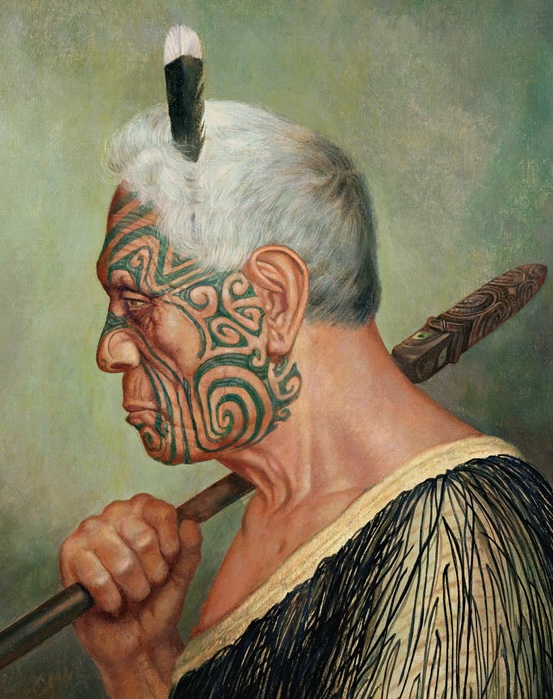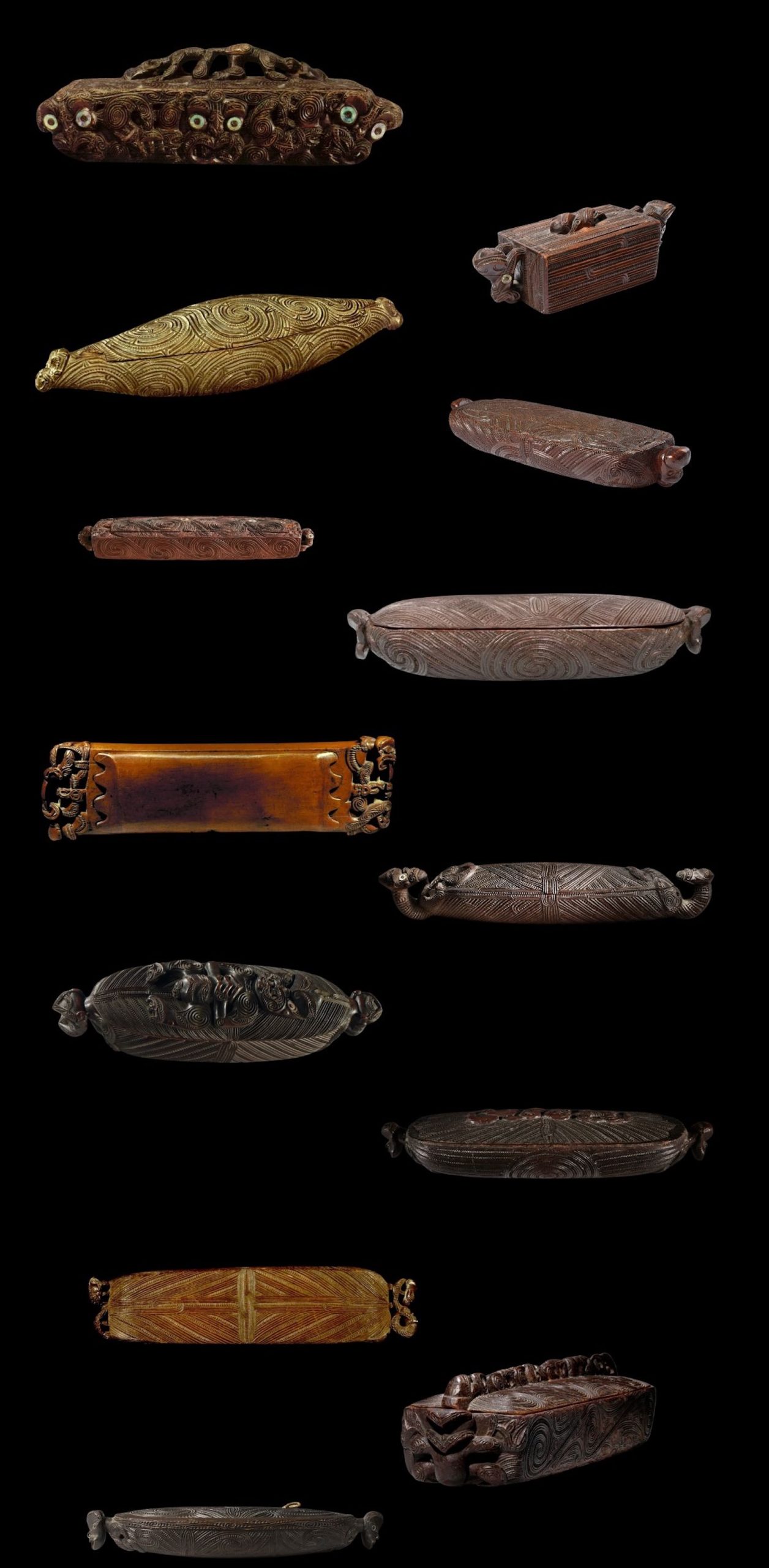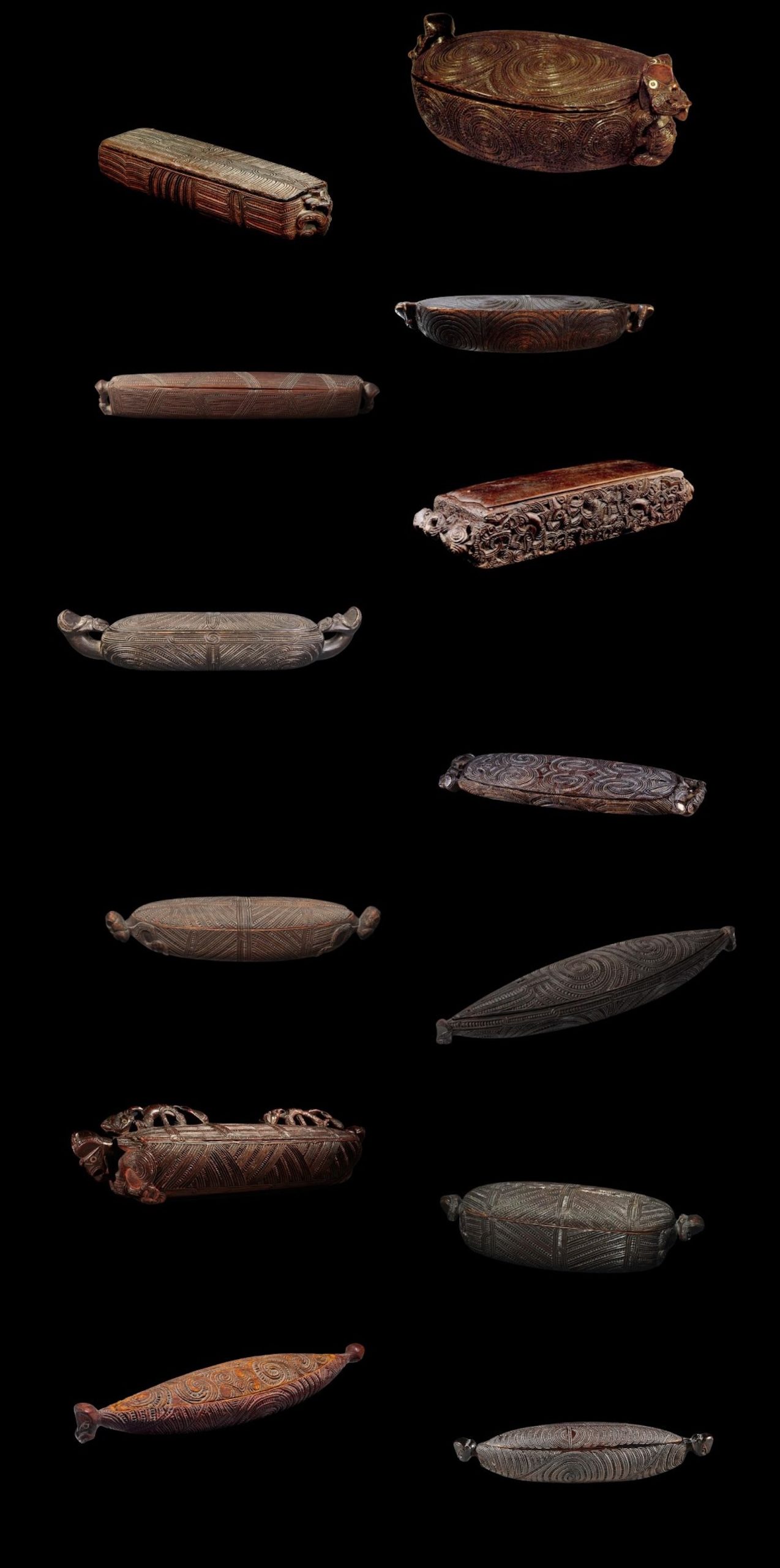Maori feather box Wakahuia

Maori Feather box Information
Waka Huia: Traditional Maori Treasure Boxes
Waka huia, also known as traditional Maori treasure boxes, are highly sought after by collectors. They were collected by European visitors (pakeha) to New Zealand since the 1850’s. Their compact size made them easy to transport, and they were repurposed in Europe for practical uses likeribbon boxes. The intricate carvings on these boxes, which often feature sexual motifs, intrigued Victorian Europeans, adding to their cultural and aesthetic appeal.
Maori Waka Huia and Their Significance
By the mid-19th century, the Maori began creating waka huia not just for personal use but also to sell to foreign collectors. These treasure boxes, also referred to as feather boxes, were originally designed to store the highly valued huia bird feathers (Heteralocha acutirostris), known for their striking black and white tail feathers. These feathers were worn by high-ranking Maori men and women as a symbol of social status. To protect the delicate feathers from insects, Maori often placed tobacco leaves inside the boxes, a practice introduced in the early 19th century. Other precious items like hei tiki (greenstone pendants), heru (combs), and mere pounamu (greenstone clubs) were also stored in waka huia.
Carvings and Design of Waka Huia
Waka huia typically feature detailed carved tiki figures at both ends, with the necks of the tiki serving as lugs to hang the boxes from cords suspended from house rafters. The bottoms of these boxes are just as intricately carved as the sides and tops, ensuring that even when suspended, the design is fully visible. When designs are incomplete, it is often the top or sides that remain unfinished, not the bottom.


Rectangular vs Oval Waka Huia: Distinctive Styles
There are two main stylistic forms of waka huia: rectangular and oval. The rectangular form is considered to be an earlier style, but both forms predate European contact. Examples collected by Captain Cook in the 1770s, found in the British Museum, show that both shapes existed before European arrival. Over time, the oval style became more popular, making it the more commonly found shape in collections today.
Challenges in Identifying Tribal Origins of Waka Huia
Many attempts have been made to categorize waka huia by tribal or geographic style based on collection locality. However, this approach faces several challenges. Early European collectors often didn’t record the exact locations of the boxes, so only a small percentage can be identified by origin. Additionally, the Maori traded waka huia between different regions, meaning a box may have been collected in one area but made in another. Moreover, Maori carvers were not bound by strict regional styles, often blending artistic elements from different districts, especially in the 19th century. This cross-regional influence complicates attempts to assign waka huia to specific tribal origins.
Understanding Waka Huia Origins Through Global Collections
To clarify the origins of waka huia, a detailed examination of early collections from various regions would be necessary. Comparing the carving techniques on these boxes with other known Maori artifacts could help establish clearer stylistic links and resolve the conflicting opinions about tribal origins. Until such research is conducted, any claims regarding tribal origins should be treated with caution.
Smaller Waka Huia: Practical Uses and 19th-Century Variations
In addition to the traditional waka huia, smaller rectangular boxes were used for practical items such as tattoo tools, pigments, and tinder. These pre-contact boxes continued to be used well into the 19th century.
There are also smaller present boxes, usually rectangular, that feature a carved high-born ancestor figure supporting a small covered container. These boxes, thought to have originated in the 19th century, may not have traditional Maori origins but bear a resemblance to similar Hawaiian human figure-supported bowls. These present boxes are examples of Post-Classic Maori miniature craftsmanship. It is unclear whether they were intended for Maori use or as tourist items for European collectors.
Conclusion: The Cultural Significance of Maori Featherboxes
In conclusion, Maori Feather boxes are not only remarkable examples of Maori craftsmanship but also serve as important cultural artifacts. They blend practical functionality with intricate symbolism, reflecting the rich artistic and social traditions of the Maori people. Whether used for personal storage or created for European collectors, these boxes remain significant symbols of Maori heritage and are highly regarded by collectors of Oceanic and Polynesian art.
The above examples are all older example made for indigenous use.
Contemporary examples are still being carved but only have decorative value.
All images in this article are for educational purposes only.
This site may contain copyrighted material the use of which was not specified by the copyright owner.
